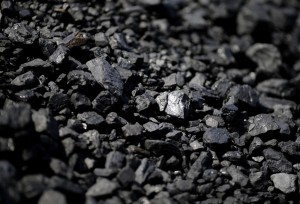Opinion Editorial by C. Blaine Cecil, Charleston Gazette Mail, April 15, 2017
Over the past couple of years, I have followed claims about the restoration of the coal industry in the Appalachian region. As a native West Virginian and someone who still has a strong allegiance to the state, I feel compelled to offer a different perspective on the future of coal.
I am a retired geologist who has invested most of my professional career to the study of coal geology in Appalachia. These studies included, but were not limited to, geologic controls on the origin of coal and coal-bearing strata; geological and chemical characteristics of coal that effect coal cleaning; and mineral and chemical characteristics of coal and coal-bearing strata that effect mine drainage water quality. These, and other studies, were always related to coal resources (the amount of coal in the ground) and coal reserves (the amount of mineable coal).
As a result of those studies, it became evident many years ago that the amount of coal resources and reserves are finite; reserves will not last forever.
As far back as the mid-1970s, a coal company executive who was responsible for coal exploration in Southern West Virginia told me that mineable coal was getting “dirtier and deeper (and thinner)” meaning that the best coal reserves had already been mined. Since that time, newer mining technologies (such as mountaintop surface mining) have continued to deplete coal reserves. As a result of reserve depletion, it is highly unlikely that coal mining (and jobs) can be restored in a significant and sustainable manner; recovery of remaining reserves will be increasingly difficult and expensive, thereby resulting in a steady and rapid decline in coal production and associated jobs.
Much of the remaining coal resources occur in beds that are thin, discontinuous, often deeply buried and uneconomical to mine, and that will never be included in reserve calculations. If these resources are ever to be recovered, it will most likely be through underground (in situ) gasification rather than conventional mining methods.
Unless some unknown factors intervene, coal production and mining jobs in Appalachia are unlikely to recover because of the following:
>>Reserve depletion. Coal reserves are nearly depleted; increases in coal production will only accelerate reserve depletion and hasten the end of a significant coal mining industry in Appalachia. This is particularly true of southern West Virginia.
>> Electricity demand. The demand for electricity from coal-fired power plants has slowed because many major industrial consumers (e.g., steel, aluminum, and chemical manufacturing) have closed most of their plants in the United States, giving rise to the “rust belt.” The demise of these industries can also be attributed, by in large, to resource/reserve depletion of raw materials.
>> Natural gas replacement. Coal is being replaced by natural gas in the generation of electricity because recently discovered natural gas is now abundant, relatively inexpensive to produce, cleaner to burn and has higher heat content than coal (on a BTU/pound basis). Natural gas-fired power plants are also cheaper to build and operate than coal-fired power plants.
>> Energy transportation. Natural gas is easier, cheaper, and more energy efficient to transport (via pipelines) to power plants located near points of consumption (e.g., large metropolitan areas) relative to transportation of electricity over power lines from mine-mouth power plants to major markets. In addition, gas is cheaper and more energy efficient for home heating than electricity. Simply put, natural gas is currently a cheaper source of energy than coal.
In summary, economic recovery and sustainability in coal-producing regions in Appalachia must refocus economic development on commercially viable activities other than coal production. The nearly total collapse of the coal industry in Great Britain and Germany in the latter part of the 20th century is a stark reminder that coal reserves become depleted.
Readers who wish to further explore the future of coal mining in Appalachia may consult resource and reserve data that are available online from both federal and state agencies.
>>> C. Blaine Cecil, of Rockbridge Baths, Virginia, originally from Moundsville, was an adjunct professor of geology at WVU, a research associate at the Smithsonian Institution and a research geologist emeritus for the U.S. Geologic Survey.
###############################
See also: Longview Power Files Prepackaged Chapter 11 To Facilitate Ownership Change, City Biz, Wash., DC, April 14, 2020
Longview Power LLC has filed for Chapter 11 bankruptcy protection under a prepackaged reorganization plan as a result of substantially lessened demand for electricity due to long term power-pricing pressure caused by cheap natural gas, an unseasonably warm winter, and the COVID-19 pandemic and resulting economic impact, which collectively have severely depressed power prices. The Company will continue to operate in the ordinary course as it quickly restructures its balance sheet.


{ 1 comment… read it below or add one }
Murray Energy — Lenders Claim Breaches of $450 Million Bankruptcy Loan
By Jonathan Randles, Wall Street Journal, April 14, 2020
Coal supplier’s advisers say they are negotiating a forbearance agreement with bankruptcy lenders.
Murray Energy Corp., the nation’s largest private coal producer, said Tuesday it is negotiating to resolve lenders’ allegations that it breached its $450 million chapter 11 financing package.
Murray has been cut off from its bankruptcy financing after lenders alleged a series of breaches to their credit agreement, company advisers testified during a telephone hearing in the U.S. Bankruptcy Court in Columbus, Ohio.
Lenders could agree to a 30-day forbearance period, but no such agreement is guaranteed, Murray’s advisers said.
https://www.wsj.com/articles/murray-lenders-claim-breaches-of-450-million-bankruptcy-loan-11586896755
…